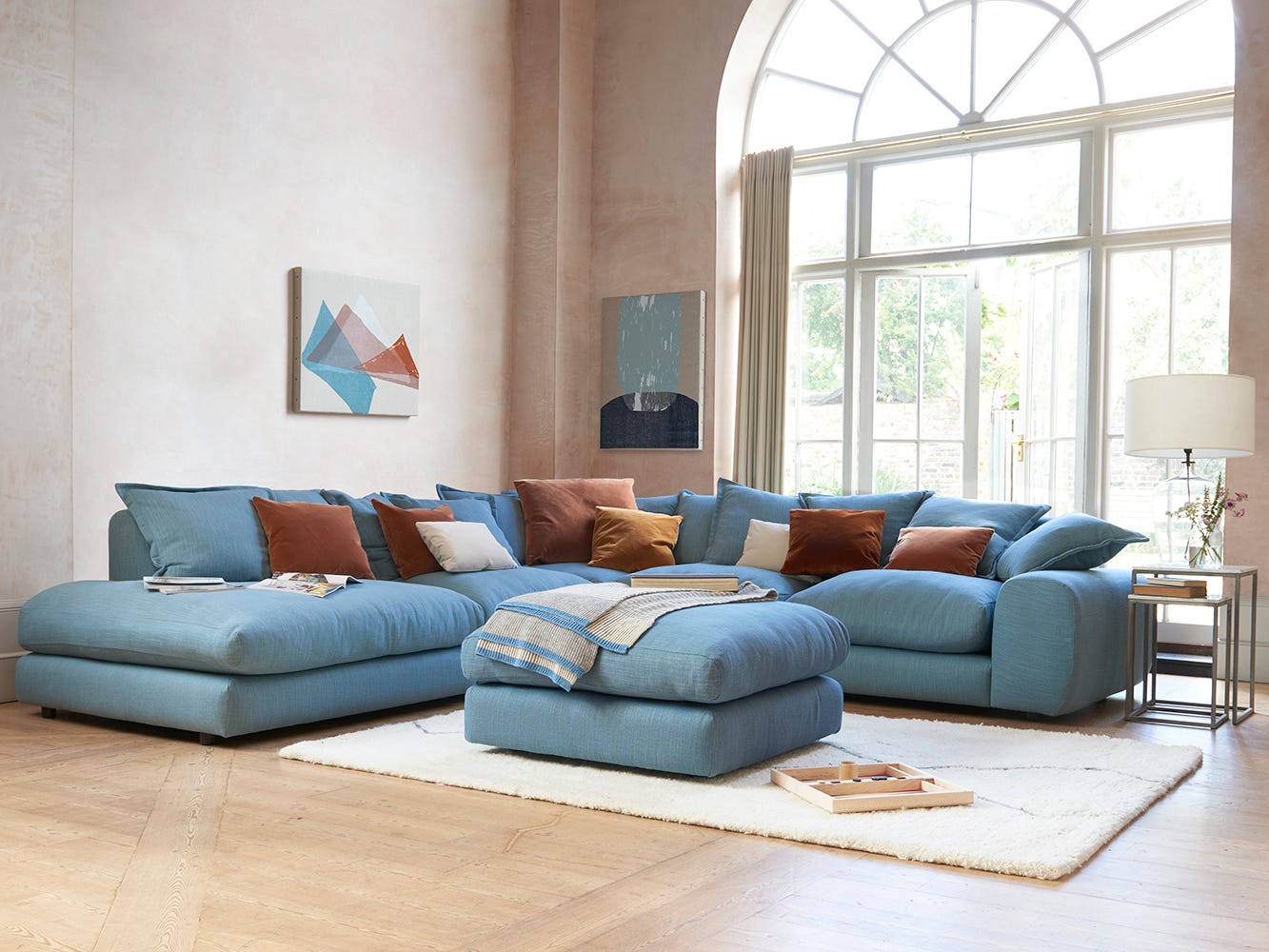Buyer’s guide: How to choose a family-friendly sofa
In the market for a new sofa? Here’s how to pick a design that will be practically bomb-proof yet super stylish

A fort, a makeshift cinema, a bouncy castle… the family sofa sees a lot of action and has to stand up to sticky fingers, hyperactive toddlers and inevitable drink spillages (whether that’s the kids’ juice or the grown-up kind). According to Snug, the majority of Brits spend an average of 3-4 hours on the couch on a daily basis, so aside from your bed, it’s probably one of the biggest investments in terms of furniture in your home.
“Recently, we've seen the rise of the ‘social sofa’, a comfortable yet practical family-friendly sofa perfect for encouraging conversation and lazy evenings,” reveals Elena Mellowes, head of buying at Oak Furnitureland. There’s even been a resurgence in Mad Men-esque mid-century conversation pits – minus the shag-pile carpet and loud fabrics. Introduced in the 50s, these sunken lounge areas were dedicated spaces designed for bringing people closer together; the perfect solution for encouraging family togetherness and open conversation. Essentially a purpose-built play den for the kids and the ideal post-bedtime drinking hole for the grown-ups, these smart built-in seating areas offer a more streamlined alternative to the traditional sofa setup, plus it’s a creative way of zoning an open-plan space that doesn’t dominate the room visually.
However, if you’re not buying into the Mad Men vibe, there are plenty of off-the-peg sofa solutions that will work for your home. Read on for our buyer’s guide to choosing a family-friendly sofa that will stand the test of time.
CHOOSE A DESIGN THAT’S EQUIPPED FOR FAMILY LIFE

There are many options out there, but an L-shaped corner sofa has the top trump card for encouraging interaction between family members. They’re a great space-saving solution as they can easily be tucked in a corner, leaving plenty of floor space for play, or a chaise sofa might be better if you need something a little more compact. If you’re lucky enough to have a larger living space, a U-shaped design is the ultimate conversation starter and a great way of zoning off a space in an open-plan area. For ultimate flexibility, go for a modular design that you can add to as your family grows, or even better, a sectional that can be moved around to suit your needs, whether that’s cosying up for a family film together or creating separate seating areas for a grown-up gathering.
MEASURE UP
“It’s important to measure the maximum depth and width of your chosen sofa’s dimensions to ensure that it will not only fit, but also suit your space,” says Nicky Line, chief product officer at Loaf. A really easy hack to check dimensions is to mark up the space a new sofa will take on the floor with some masking tape. This helps you visualise it in the room before you commit to buying. “You don’t want the sofa to be ‘floating’ in the room, so I would recommend going for as big of a sofa style as the room can fill,” adds Nicky. “Remember to also measure up the dimensions of doors and stairways to ensure the sofa can be delivered into the space.”
PICK THE RIGHT FABRIC

Whether it’s the toddler leaving their beaker cup upside down on the sofa, a pet with muddy paws or a grown-up knocking over a well-earned glass of wine, spillages are inevitable in a busy family household. However, there’s been an uptick in revolutionary stain-resistant fabrics from brands including Darlings of Chelsea (see pic above) and Loaf among others that have a special coating designed to make them resistant to spills and foods. The liquid beads up on the surface rather than soaking in straightaway, allowing you time to quickly mop it up before any stains set in. They’re not just getting smarter, they’re getting more sustainable too. “We're seeing an exciting evolution within PET/recycled fibres, with everything from plastic bottles to vegetables used to stain coloured cloth,” says Elena. “This offers fantastic eco-credentials with the same performance power as traditional fabrics.”
If you’re super concerned about stains, you can also pay a little extra (often a few hundred pounds) to sign up to a fabric protection plan that will cover any stains and spills that occur. It’s also worth considering designs with darker-coloured fabrics or patterned designs to help maintain the sofa’s appearance over time. It’s perhaps obvious, but also make sure you order plenty of swatches before you buy and check the colour against your scheme both throughout the day and into the evening, to make sure you’re happy with your decision. The average consumer keeps their sofa for around 10 years before upgrading so try and go for a more neutral/muted base shade that can be updated with scatter cushions and throws for affordable pops of colour that can easily be updated as your tastes change and evolve.
LOOK FOR BONUS FEATURES

The more multifunctional your sofa can be, the better. “Don’t forget that your upholstered furniture can offer more than just somewhere to sit – it can also double up as a storage solution,” says Lou Petersen, head of design innovation at DFS. “If storage space is at a premium, look for pieces such as chaise-end sofas that offer built-in storage, to give you extra hidden space without increasing the furniture footprint in your home. DFS’s Storeaway range provides handy storage compartments as well as reading lights and USB charging points.”
Incorporating a sofa bed is also a great investment if you’re hosting regularly, whether that’s friends and family coming for weekend stays, or the inevitable sleepovers. It’s worth investing in one with a comfortable mattress for guests (typically around 10-14cm thick) and ensuring that the construction is of high quality with secure folding mechanisms with little fingers around.
Love this guide? Check out our feature on how to create a family-friendly living room.



